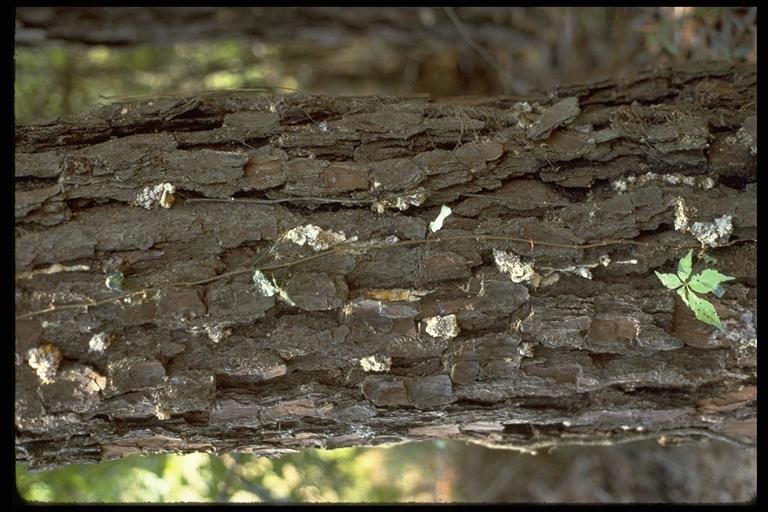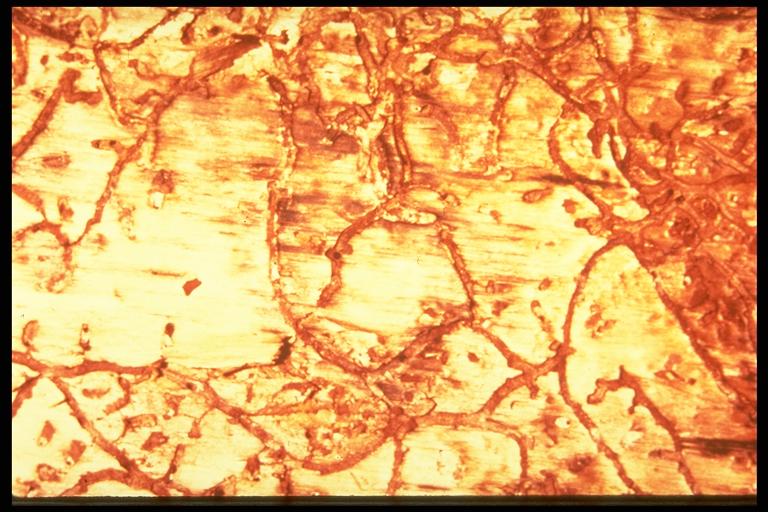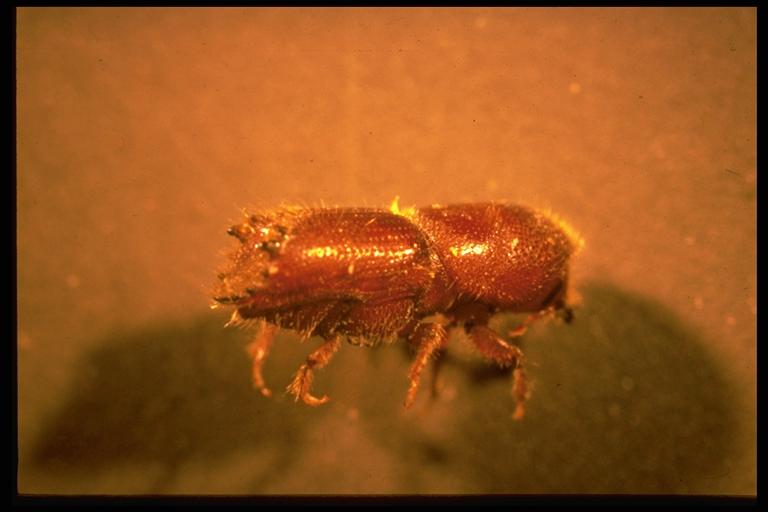
Southern pine bark beetle, Dendroctonus frontalis Zimmermann (Coleoptera: Scolytidae), pitch tubes. Photo by Drees.
Common Name: Southern pine bark beetle, bark beetle
Scientific Name: Dendroctonus frontalis Zimmermann
Order: Coleoptera
Description: The usual method of detecting this insect is by observing masses of pitch (pitch tubes) on the bark of dying pine trees. Adult beetles are tiny, being 1/16 to 3/16 inch long, dark brown to black cylindrical beetles. Diagnosis of dead trees is made by the appearance of the pattern of galleries that appears S-shaped underneath the bark and outside of the heartwood (in the phloem-cambium layer).
Other bark beetles that attack pine trees include the black turpentine beetle, Dendroctonus terebrans (Oliv.), and engraver beetles (Ips species). These beetles produce superficially similar symptoms to those caused by southern pine beetles on the trunk, but may not result in rapid decline and death of infested trees. The gallery patterns of these beetles are not S-shaped patterns.

Southern pine bark beetle, Dendroctonus frontalis Zimmermann (Coleoptera: Scolytidae), galleries. TAEX file photo.
Life Cycle: Adults emerge from a host tree and fly to a new host tree where they begin burrowing into the bark to construct galleries. They release an attractant chemical (pheromone) that attracts more beetles and mate. In galleries, adult females deposit eggs that hatch in 3 to 34 days, depending upon temperature, into cream-colored, legless grub-like larvae with brown heads. Larvae develop through four stages (instars) until they reach about 1/4 inch in length over a period of 15 to 40 days before pupating. Adults hatch within 17 days. A generation from egg to adult can be completed in 26 to 54 days. Seven to nine generations (many overlapping) can occur annually in Texas.
Habitat and Food Source(s): Mouthparts are for chewing. Southern pine beetles attack mainly densely stocked, slow growing pine stands with a high percentage of over-mature pine saw timber. Some pine tree species are more susceptible than others. Trees damaged by lightning and other natural events or by nearby construction are more likely to be infested. Beetles disperse in the fall and develop in scattered host trees. From March through May, beetles emerge and colonize new host trees. Injured trees decline rapidly during summer months and infestations may spread from tree to tree as additional beetles are attracted to the site of infestation. All stages can be dissected from underneath bark of dead or dying infested pine trees.
Pest Status: Occurs in east Texas where they colonize susceptible pine trees in high numbers, causing injury that results in rapid decline and death of infested trees; medically harmless.

A bark beetle, Ips sp. (Coleoptera: Scolytidae). TAEX file photo.
Damage: Needles on infested pines turn first turn yellow and then red, before dropping. Masses of resin (pitch) develop on the bark surface and fine brown to white boring dust accumulates in bark crevices, underneath sites of infestation and at the base of the trunk. Infested trees die quickly due to girdling action of galleries and a blue stain fungus.
For additional information, contact your local Texas A&M AgriLife Extension Service agent or search for other state Extension offices.
Literature: Anon. 1982; Thatcher et al. 1980.